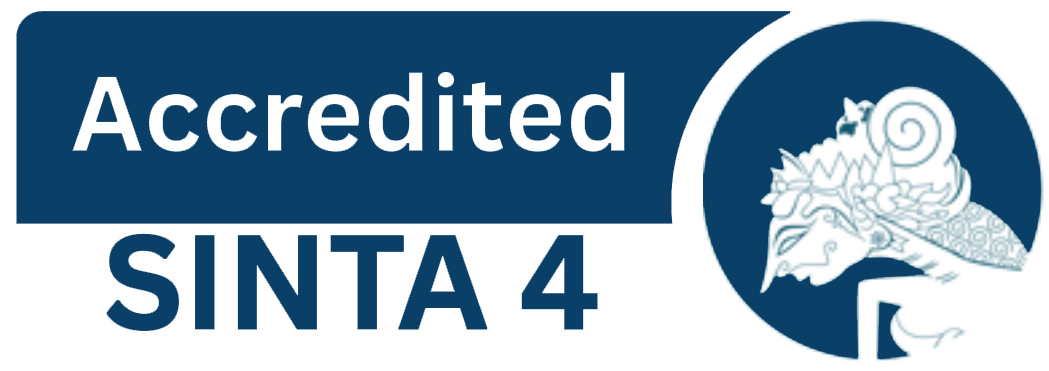THE IMPLEMENTATION OF PROJECT BASED LEARNING IN COURSEBOOK EVALUATION CLASSROOM
DOI:
https://doi.org/10.22460/p2m.v6i2p%25p.1446Keywords:
Project based Learning, Implementation, ProblemsAbstract
Critical thinking is a crucial skill that university students need to develop. Project-based learning can be used to promote students’ critical thinking. The paper investigates the implementation of project based learning in Coursebook Evaluation course at a university setting. The purposes of this research study were: 1) to describe the implementation of Project based learning in Coursebook evaluation classroom and 2) to investigate the students’ difficulties during the implementation of Project based learning. The design of the research was descriptive qualitative. The subjects were the fourth semester students who were taking course book evaluation. The data were collected through observation, interview and students’ project. The findings showed that the implementation Project-Based Learning in Coursebook Evaluation class are through the following steps: (1) Discussing the materials about Course Book Evaluation, (2) working with the group in evaluating English Course Book, (3) creating the paper, (4) creating the video, and (5) presenting the video product. Moreover, the data from interview also revealed that there were three problems encountered by the respondents during the implementation of project based learning: finding appropriate information, writing the paper and creating the video.
References
Apsari, Y. (2018). Reflective Reading Journal in Teaching Writing. Indonesian EFL Journal, 4(2), 39-47.
Apsari, Y., & Satriani, I. (2016). Students’perception Toward The Implementation of Digital Storytelling In Teaching Writing. P2M STKIP Siliwangi, 3(2), 97-102.
Beare, K. (2011). How to choose a Coursebook and other classroom materials. [Online]. Available at: http://esl.about.com/cs/teachingresources/ht/coursebook.html
Bell, S. (2010). Project-Based Learning for the 21st
Century: Skills for the Future.
The Clearing House, 83(2), 39–43.
Bender, W. N. (2012). Project-based learning:
differentiating instruction for the 21st
century. Thousand Oaks, Calif: Corwin
Press.
Bertin, B. (2003). How to use coursebooks. [Online]. Available at: http://www.univirtual.it
Beyer, B.K. (1985). Critical thinking: What is it?,
Social Education, 49, 270-276.
Chaffee, J. (2000). Thinking Critically. Sixth
Edition. New York: Houghton
Mifflin Company.
Chaffee, J., McMahon, C., Stout, B. (2002). Critical
Thinking Thoughtful Writing.
Second Edition. New York: Houghton
Mifflin Company.
Chou, P. (2010). Advantages and disadvantages of ESL course books. [Online]. Available at: http://iteslj.org/Articles/Chou-CourseBooks.html.
Cunningsworth, A. (1995). Choosing your coursebook. Oxford: Macmillan Publishers
Dorn, L. J., and C. Soffos. (2005). Teaching for
Deep Comprehension: A Reading
Workshop Approach. Portland, ME:
Stenhouse.
Facione, P. A. (2006). Critical Thinking: What it is
and why it counts. Insight
Assessment, California Academic Press.
Fragoulis, L. (2009). Project-Based Learning in
Teaching of Englishas A Foreign
Language in Greek Primary Schools: From Theory to practice. (A Journal).
English Language Teaching. Vol. 2
September 2009
Frankel, J. & Wallen, N. (1993). How to Design and
Evaluate Research in Education.
Singapore: McGraw-Hill, Inc.
Hafner, C. A., & Miller, L. (2011). Fostering learner
autonomy in English for
science: A collaborative digital video project in a technological learning environment.
Language Learning & Technology, 15(3),
-86.
Krauss, J.& Boss,S. 2013.ThinkingThroughProject-
BasedLearning: Guiding
Deeper Inquiry. Thousand Oaks, CA :
Corwin.
Krajcik, J. S., Blumenfeld, P. C., Marx, R. W., &
Soloway, E. (1994). A collaborative
model for helping teachers learn
projectbased instruction. Elementary
School journal, 94, 483-497.
Maxwell, J. A. (1996). Qualitative Data Analysis: A
Source Book of New Methods.
London: Beverly Hills.
McGrath, I. (2002). Materials evaluation and design for language teaching. Great Britain: Edinburgh University Press.
Molitor, L.L., & George, K.D. (1976). Development of a Test of Science Process Skills. Journal of Research in Science Teaching, 13, 405-412.
Moursund, D. (1999). Project-based learning using
information technology. Eugene,
Oregon: International Society for
Technology in Education.
Neo, M., & neo, T.-K. (2009). Engaging students in
multimedia-mediated
constructivist learning—Students’
perceptions. Educational technology
& Society, 12(20, pp. 254—66.
Norris, S. P. & Ennis, R. H. (1989). Evaluating
Critical Thinking. Victoria: Midwest
Publication.
Nunan, D. (1992). Research Methods in Language
Learning. United State of America:
Cambridge University Press.
Nunan, D. (1999). Second Language Teaching and
Learning. Boston: Heinle &
Heinle Publisher.
Poonpon, Kornwipa. (2011). Enhancing English
Skill through Project Based
Learning. The English Teacher Vol. XL: 1-
Journal. (pp. 1-10).
Richards, J.C. (2001). Curriculum Development in
Language Teaching. New York: Cambridge University Press.
Savery, John R. (2006). Overview of problem based
learning: Definitions and
Distinctions.Interdisciplinary Journal of problem-based learning; Vol. 1: Iss. 1, Article 3
Silverman, David. (2005). Doing Qualitative
Research. London: SAGE Publication
Ltd.
Simpson, J. (2011). Integrating project-based
learning in an English language
tourism classroom in a Thai university
institution. Doctoral Thesis,
Australian Catholic UniversityStoller,
Stoller, F. (2006) Establishing a Theoretical
Foundation for Project-based Learning in
Second and Foreign Language Contexts
Reinders, H., & White, C. (2011). Learner
authonomy and new learning
environments. Language Learning &
Technology, 15(3), 1-3.
Richards J. C. & Renandya W. A. (eds.).
Methodology in language teaching: An
anthology of current practice (pp. 107-120)
.Cambridge: Cambridge
University Press.
Spendlove, D. (2008), "Creativity in education: a
review, Design and Tech",. Edu.:
An International Journal, 10(2), 9-18.
Thomas, J., Michaelson, A. and Mergendoller, J.
(2002). Project-based learning: A
handbook for middle and high school
teachers. Novato, CA: The Buc Institute
for Education.
Tomlinson, B. (2008) English Language Learning
Material: A Critical Review.London:
Williams, S. (2017). Investigating the Allocation
and Corroboration Of Individual
for Project-Based Learning. Student in
Educational Evaluation, 53: 1-9.
Continuum International Publishing Group.


















